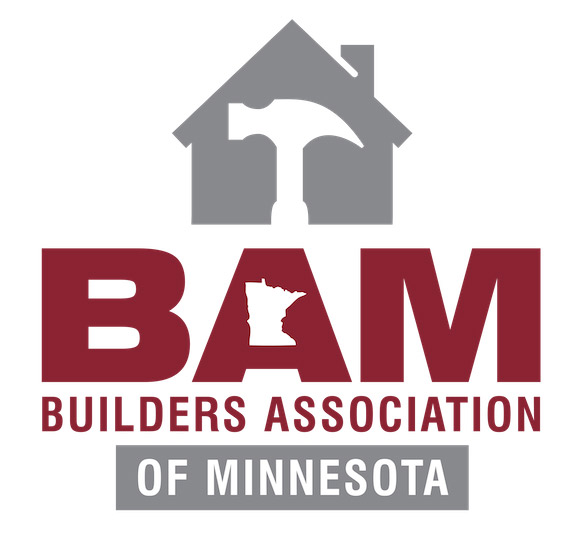DUCT LEAKAGE TESTING
Overview
© 2017 Builders Association of Minnesota
Contact info@bamn.org for more information.
2015 Minnesota Residential Energy Code section R403.2.2 requires duct leakage testing for all new residential buildings.
The testing is typically performed after the ‘final’ installation of the HVAC system, however the test can also be performed at HVAC ‘rough-in’ (with or without the air handler installed).
The requirement is met if the duct system has a leakage rate not exceeding 4 cfm per 100 square feet of conditioned floor area, when the system is pressurized to 25 Pascals.
If the air handler is not installed at the time of the ‘rough-in’ test, the leakage rate cannot exceed 3 cfm per 100 square feet of conditioned floor area (CFA).
These leakage rates can be challenging to achieve. For reference, the latest version of Energy Star for Homes has a duct leakage rate of 6 CFM25 per 100 sq. ft. of CFA at ‘rough-in’ or 12 CFM25 per 100 sq. ft. of CFA at ‘final’ for duct systems with three or more returns (which is typical for most Minnesota homes).
Exception: Duct leakage testing is not required when the ducts and air handler are located entirely within the building thermal envelope.
Ducts installed in a floor over unconditioned space can be considered to be within the building envelope provided the following items are met:
1. Ducts, including the duct boot where they intersect the floor above must be sealed in accordance with provisions of section R403.2.2 using materials listed in the Minnesota Mechanical Code section 603.9.
2. The insulation in the floor assembly must not be compressed, must meet the required “R” value listed in Table R402.1.1, and be installed completely below the duct.
3. If the duct is also used to provide cooled conditioned air to the room or space above, it shall be insulated to a minimum of an R-8 with a vapor retarder installed in accordance with section 604.11 of the Minnesota Mechanical Code.
http://www.dli.mn.gov/ccld/PDF/Opinion_energy201501.pdf
If you cannot locate the duct system within the thermal enclosure of the home to avoid the duct leakage testing requirement, we recommend that you benchmark test one of your home’s duct system and work closely with your HVAC contractor and a professional certified rater that can provide additional diagnostics to locate duct leaks and recommend strategies to improve duct tightness in future projects.
To Conduct The Test
1. Electrical power must be available to operate the duct testing fan
2. Measure the building and calculate the total conditioned floor area
3. Turn off heating, cooling and ventilation systems
4. Adjust all combustion appliances so that they do not turn on during the test
5. Turn off exhaust fans, dryers, etc.
6. Any intentional openings into the duct system such as ventilation ducts shall be left in their normal non-ventilation operating position
7. Motorized dampers should be closed
8. Seal off all supply and return registers with a temporary seal material
9. Open a door or window between the house and outside
10. Leave all interior doors open
11. Remove filter from the duct system
12. Open all zone dampers
13. Select a location to measure duct pressure with the manometer’s reference probe, typically at the supply plenum
14. Connect the duct testing fan to the air handler blower access door (See manufacturer’s instructions for correct set-up)
15. Pressurize the system with duct testing fan to 25 Pascals
16. Measure the duct pressure reading and the fan flow reading and record the test results
The test results also must be recorded on the required energy certificate that is posted on or near the electrical panel.
The test can be conducted by anyone, including the HVAC contractor or a third party such as a professional certified rater.
Find A Certified Rater
The following resources can help you find a professional certified rater:
